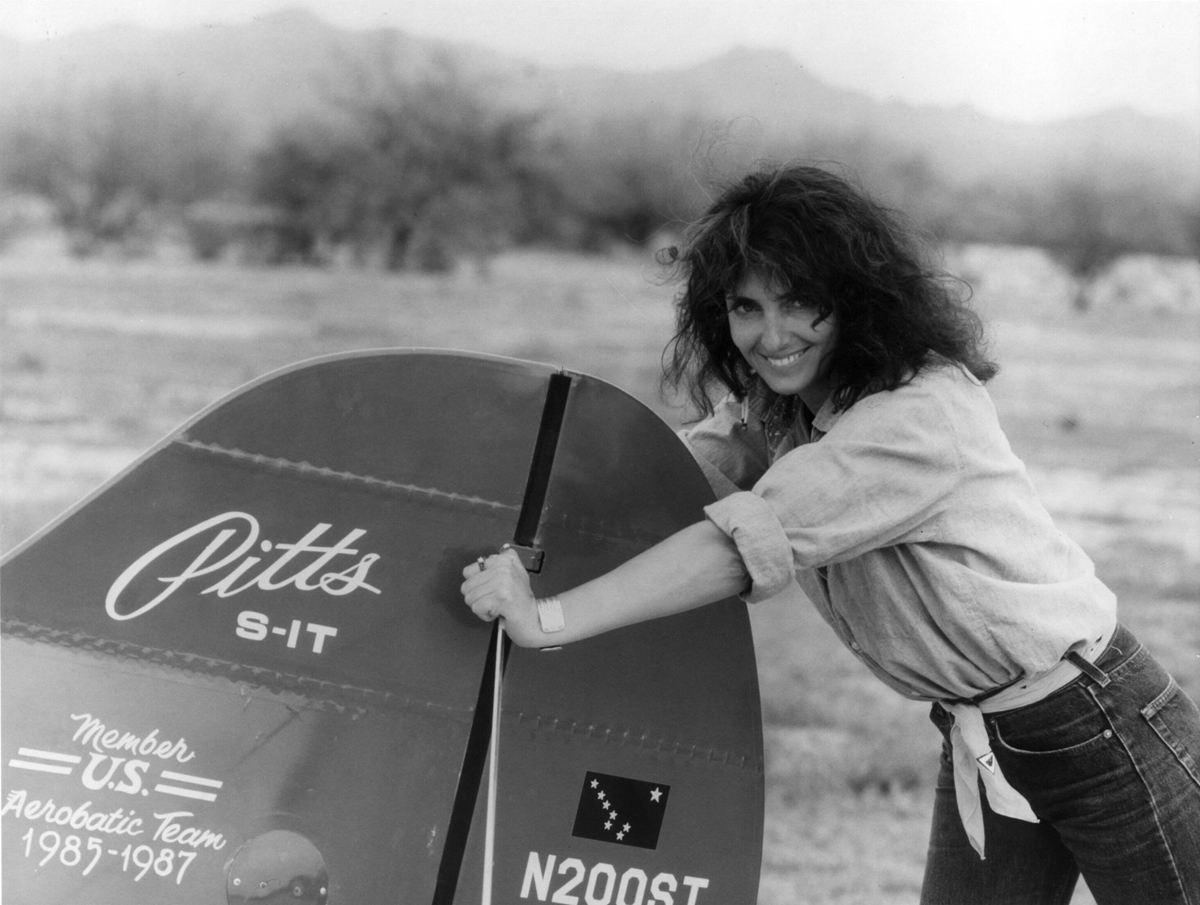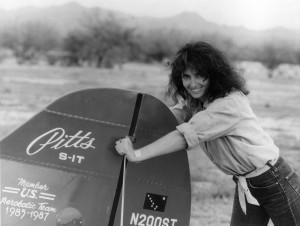Anyone who knows what Patty Wagstaff has accomplished might think she had her career planned since she was a child. After all, her airline pilot father, Robert Thomas Combs, provided her with thorough exposure to aviation. Toni, her younger sister, followed that same path to the left seat, becoming an airline pilot with Continental Airlines. But the direction wasn’t initially as clear for Patty Combs, who earned her pilot’s license while in her 20s. She didn’t have the opportunity to fly while growing up and her free-spirited, “gypsy” nature pulled her in other directions.
Her father, who was an Air Force pilot when she was born, and her mother, Rosalie, had moved the family from California to New York and back again before their oldest daughter turned 5. Shortly after their second daughter was born four years later, Japan Airlines hired Robert Combs to fly on contract for the International Air Service Corporation. The family moved to Tokyo, Japan.
“There’s really no general aviation in Japan,” she said. “Dad always flew the big airplanes. He let me fly with him. I knew from the first time he let me sit in the pilot seat that I loved flying. Before that, I simply loved airplanes. Growing up around aviation gave me the great experience of travel and of aviation; for that, I’m very grateful.”
It wasn’t until moving to Alaska in the late 1970s that she started taking flying lessons. She said that people come to the U.S. to learn to fly, because the opportunity is better here than elsewhere.
“I hadn’t really lived in the U.S. when I was a kid, so it took that long—but then I don’t really consider learning to fly in your 20s taking very long. You don’t have to be a teenager to start!” she said.
After living in the U.S., Japan, Switzerland and England, Patty moved to Australia with her first husband. They traveled the coast of Australia in a small boat they built and on which they lived. After the couple parted ways, she left the west coast of Australia, moving to Brisbane, where she studied and worked at the University of Queensland in Brisbane.
“I thought about a career in medicine while I was there, but decided to travel to Africa to study instead,” she said.
First, she visited her family in Anchorage, Alaska, and decided the environment suited her. She started working at the Bristol Bay Native Association in Dillingham, about 300 miles southwest of Anchorage, as an economic development planner, traveling to all of the 29 villages in the region.
While there, she met Bob Wagstaff, a lawyer and a pilot with a flight instructor rating. Not long after their first meeting, he took her for her first informal flying lesson, in his Cessna 185 floatplane, equipped with dual controls. She hired him to fly her around to the villages she needed to visit to assess their economic development needs.
Almost the instant she took the controls, she realized her destination. She said flying added true meaning to her life and gave her a new attitude. It was something that allowed her to be herself and something at which she could excel.
She soon found that when she was in the air, everything else paled in comparison. Flying opened a door to a completely new world. Not content to earn just her private pilot’s license, which she did in 1980, she added a seaplane rating the following year. She would eventually go on to obtain her commercial, multi-engine, instrument and commercial helicopter ratings. She’s also a certified flight and instrument instructor and rated to fly several types of aircraft from World War II warbirds to jets.
Although she instantly loved flying, she didn’t know what she’d ultimately do with it. She did know she didn’t want to fly “straight and level” forever and was very interested in exploring other dimensions of the three axes of flight. Aerobatic lessons weren’t easy to find in Alaska, but finally she found Darlene Dubay, who gave lessons in a 150-hp Decathlon. Her focus on aerobatics began to emerge after she and her husband flew together to British Columbia to attend the Abbotsford International Air Show in 1983.
“That was the first time I’d ever watched aerobatics or seen an air show,” she said. “While standing at the fence watching the performers interact, I knew I wanted to be a part of that lifestyle.”












